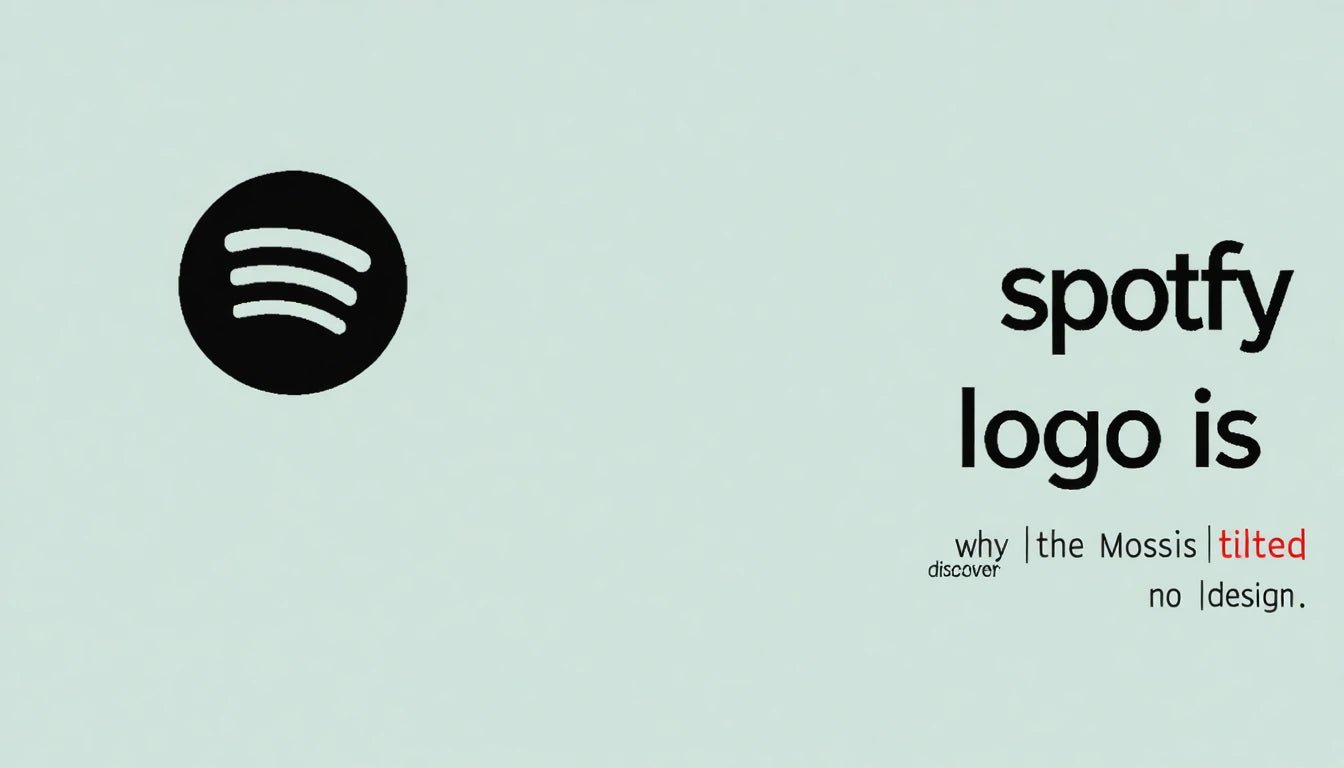Why Is the Spotify Logo Tilted?
The Spotify logo, with its distinctive tilted sound waves, has become one of the most recognizable brand symbols in the digital music industry. Many users have wondered why the Spotify logo is crooked or tilted rather than perfectly aligned. This intentional design choice represents more than just aesthetic appeal, it embodies the brand's personality and values while creating visual distinction in a crowded marketplace.
Spotify Logo History: From Inception to Iconic Status
Launched in 2008, Spotify revolutionized how people consume music. The company's visual identity has undergone several refinements, but the tilted sound wave concept has remained consistent. According to a detailed history of Spotify's brand evolution, the original logo featured a more pronounced tilt and rounded sound waves.
The current iteration, introduced in 2015, maintains the tilted orientation while embracing a brighter green hue and slightly modified wave design. This evolution demonstrates how Spotify preserved its core visual identity while adapting to changing design trends and digital environments.
Why the Tilted Design? Strategic Reasons Behind the Crooked Appearance
Movement and Energy
The primary reason why the Spotify logo is crooked relates to conveying movement and energy. The tilted sound waves suggest audio in motion, representing the dynamic nature of music streaming. This sense of motion aligns perfectly with a service dedicated to delivering continuous audio content.
Brand Differentiation
In a market filled with symmetrical and grid-aligned logos, Spotify's tilted design creates immediate visual distinction. Similar to how Apple's bitten logo creates recognition, Spotify's crooked appearance makes it instantly identifiable even at small sizes or from a distance.
Visual Psychology: How the Tilted Logo Affects Perception
The psychology behind tilted design elements reveals why Spotify's choice resonates with users. Angled elements in design create visual interest and energy that perfectly aligned objects cannot achieve. When we see something slightly askew, it captures attention because it breaks expected patterns.
Additionally, the tilted waves resemble sound visualization, creating an intuitive connection to audio. This subtle reference to sound waves helps users immediately associate the symbol with music, even without the accompanying wordmark.
Collectors and enthusiasts often display brand logos they connect with on various items, from customized accessories and display trays to clothing and digital avatars, showing how effective visual branding transcends the digital space into physical manifestations of brand loyalty.
Design Evolution: Changes to the Spotify Logo Over Time
While maintaining its tilted orientation, the Spotify logo has evolved in several key ways:
- Color: Shifted from a darker forest green to the current vibrant "Spotify green" (#1DB954)
- Wave Design: Simplified from more detailed sound waves to cleaner, more abstract forms
- Wordmark: Gradually reduced emphasis on the wordmark in favor of the standalone symbol
- Tilt Angle: Slightly adjusted for optimal display across various digital platforms
These refinements demonstrate how successful brands evolve their logos while maintaining core recognition elements. Spotify's approach mirrors other tech giants like Google's logo transformation, balancing heritage with contemporary design needs.
Brand Recognition: How the Tilted Logo Enhances Memorability
The tilted design contributes significantly to Spotify's brand memorability. When users quickly scan their phone screens or desktop icons, the distinctive crooked appearance creates instant recognition. This visual shorthand is invaluable in today's attention-scarce digital environment.
According to principles explored in logo design psychology, distinctive visual elements like Spotify's tilt create stronger memory imprints than perfectly symmetrical designs. This explains why even when reduced to its simplest form, the Spotify icon remains immediately identifiable to millions of users worldwide.
Future of Spotify Visual Identity: Adaptation While Preserving the Tilt
As Spotify continues to expand its service offerings beyond music into podcasts, audiobooks, and potentially other media formats, its visual identity will likely evolve further. However, the fundamental tilted design element has become so central to brand recognition that abandoning it would sacrifice valuable brand equity.
Future iterations may see subtle refinements in color, proportion, or accompanying elements, but the tilted sound waves will almost certainly remain. This approach mirrors how other successful brands like Facebook evolved their logos while maintaining core recognition elements.
The crooked Spotify logo demonstrates how intentional design choices can create distinctive brand assets that transcend their functional purpose to become cultural icons. The tilted sound waves have become not just a company identifier but a symbol of the streaming revolution that transformed how we experience music.



















